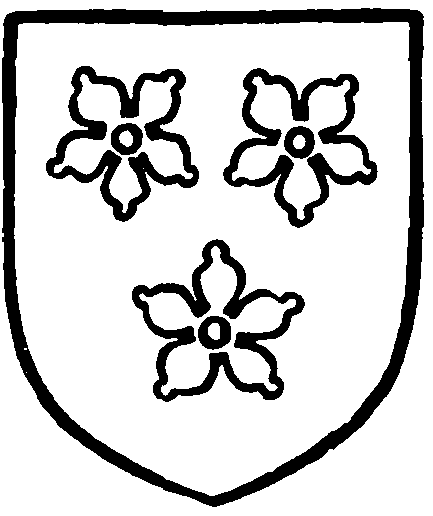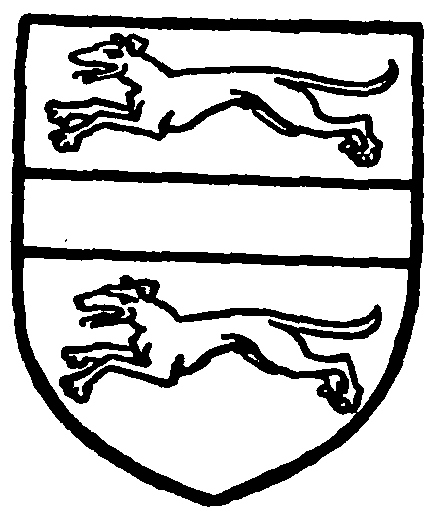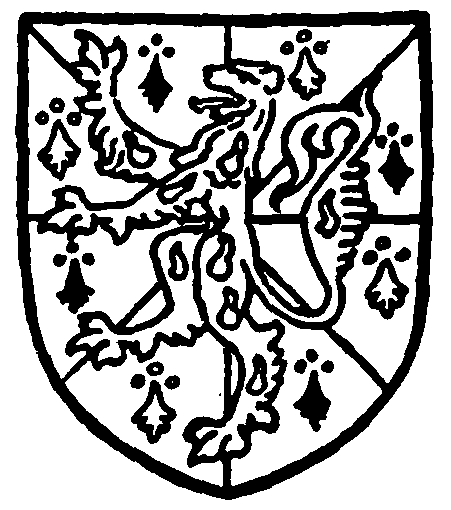A History of the County of Warwick: Volume 6, Knightlow Hundred. Originally published by Victoria County History, London, 1951.
This free content was digitised by double rekeying. All rights reserved.
'Parishes: Radford Semele', in A History of the County of Warwick: Volume 6, Knightlow Hundred, ed. L F Salzman( London, 1951), British History Online https://prod.british-history.ac.uk/vch/warks/vol6/pp200-202 [accessed 22 December 2024].
'Parishes: Radford Semele', in A History of the County of Warwick: Volume 6, Knightlow Hundred. Edited by L F Salzman( London, 1951), British History Online, accessed December 22, 2024, https://prod.british-history.ac.uk/vch/warks/vol6/pp200-202.
"Parishes: Radford Semele". A History of the County of Warwick: Volume 6, Knightlow Hundred. Ed. L F Salzman(London, 1951), , British History Online. Web. 22 December 2024. https://prod.british-history.ac.uk/vch/warks/vol6/pp200-202.
In this section
RADFORD SEMELE
Acreage: 2, 123.
Population: 1911, 556; 1921, 578; 1931, 532.
The parish forms roughly an inverted triangle, with a northern base of 1½ miles and a depth of 2½ miles to its apex in the south. Its boundary on the north is the River Leam, a tributary of which bounds it on the west, meeting at the southernmost angle the Fosse Way, which is its eastern boundary for a distance of just over a mile. Close to its northern edge the parish is crossed by the Warwick and Napton Canal and by the Rugby and Leamington branch of the L.M.S. Railway. The road from Leamington enters the parish at its north-west angle and leads to Radford Church and Hall, but most of the village lies farther to the south-east along a branch road running south past the Baptist Chapel to end at Pounce Hill Farm. Most of the land lies between 200 ft. and 250 ft., but the Leamington road on its way towards Southam reaches 300 ft. on Radford Hill, and Crown Hill, just east of Pounce Hill Farm, is also slightly over 300 ft. There are no large blocks of woodland, but there are spinneys, particularly near the village, and a good deal of timber in the hedgerows.
The village contains, at present, a number of picturesque cottages, mostly timber-framed with brick nogging and thatched roofs, dating probably from the early part of the 17th century. Radford Hall, west of the church, is a red brick house with stone dressings and mullioned windows; it dates from the early 17th century, to which period the panelling in the hall belongs, but has been considerably modernized. In the surrounding wall is a 17th-century stone doorway with cornice and pediment. The Manor House is mainly modern but contains a 16th-century timberframed nucleus, now part of the servants' quarters.
In 1086 there was a mill worth 6s. 8d., (fn. 1) and this was held by Geoffrey de Simely in 1279. (fn. 2) It was conveyed to Kenilworth Priory in 1325 by John Lok and Roger de Boyvill, clerks. (fn. 3) A water-mill was still attached to the manor in 1606 (fn. 4) and as late as 1653. (fn. 5) It does not appear to be mentioned after this, but fishing rights in the River Leam belonged to the manor in the 18th century. (fn. 6)
Manor
In 1086 the 5-hide vill of Radford was among the estates of Turchil. It had belonged before the Conquest to Edwin, but had later been bought from Chetelbert (brother of Turchil (fn. 7) ) by Ermenfrid, who at the time of the survey held it from Turchil, though it was alleged that he ought to hold directly of the king. (fn. 8) The overlordship came to the earls of Warwick, being held of them as half a knight's fee. (fn. 9) The first earl, Henry de Newburgh, is said to have given the manor to Geoffrey de Clinton, who enfeoffed Henry de Simely, (fn. 10) who also succeeded Ermenfrid at Ashow and Calcutt in Grandborough [q.v.]. From this family the manor took its name of RADFORD SEMELE. Henry de Simely, at the request of his wife Emma, agreed to the confirmation of Geoffrey de Clinton's gift of the church of Radford to Kenilworth Priory. (fn. 11) He was followed by his son William Simely, who allowed William Pludieu to assign lands here to the Templars at some date shortly before 1185. (fn. 12) Geoffrey de Simely, son of William, (fn. 13) was holding the half-fee of the Earl of Warwick in 1242 (fn. 14) and gave to the Hospital of St. John in Warwick 2s. rent payable by Roger de Cherlecote for leave to put one end of the dam of his mill at Whitnash on Geoffrey's land in Radford. (fn. 15) William de Simely held the manor in 1267 (fn. 16) and his son Geoffrey in 1279 held it, with a water-mill and 2 plough-lands, of Simon Basset, (fn. 17) who held of the Earl of Warwick. (fn. 18) Geoffrey was still lord in 1316, (fn. 19) and his son John, who had succeeded by 1323, (fn. 20) conveyed the manor and 4 plough-lands, worth 19 marks, to the Priory of Kenilworth before 1367, in which year the canons were pardoned for having received the property without licence. (fn. 21)

Simely. . . . three cinquefils .... (fn. 10)
In 1279 the Prior of Kenilworth was one of the lords of Radford; he was said to hold of Richard Corbisson, (fn. 22) who held of Geoffrey de Simely. (fn. 23) During the first half of the 14th century many small grants of land in the parish were made to Kenilworth; (fn. 24) in 1291 the monks had 2 plough-lands, worth £2, and 9s. in rents; (fn. 25) in 1535 the rents from their property, apart from the rectory, amounted to £33 15s. 6d.; (fn. 26) the bailiff at this latter date was Henry Yardley, who received a fee of 26s. 8d. (fn. 27) and the Yardleys continued to hold property in the parish until at least the middle of the 17th century. (fn. 28) At the Dissolution the total farm of the manor was £40 4s. 9½d., including the rectory. (fn. 29) The manor was granted in August 1546 to Sir Thomas Darcy, (fn. 30) who, as Lord Darcy of Chiche, conveyed it to Richard Knyvet and Helen his wife in tail male in 1556. (fn. 31) Richard died in 1559, leaving a son Henry, then aged 7 months and 15 days, (fn. 32) who in 1589 sold to John Browne, of Barnham (Sussex). (fn. 33) His son Sir William Browne died at Radford on 11 March 1637, having settled the manor on Margaret, wife of his son George and one daughter of Sir Edward Littleton. (fn. 34) George died without issue in 1660, his heir being Elizabeth, wife of Sir William Throckmorton. She sold to Humphrey Greswold, on whose death in 1671 it passed to his brother Henry, rector of Solihull, whose son Marshall Greswold was lord of the manor when Dr. Thomas was writing, c. 1725. (fn. 35) Marshall's three sons having died childless, the estate passed to their sister Mary wife of David Lewis (fn. 36) and then to their son Henry Greswolde Lewis, on whose death in 1829 it passed to Edmund Meysey Wigley, descendant in the sixth generation from Anne (died 1669) sister of Marshall Greswolde. He took the name of Greswolde, as did his uncle Henry Wigley when he succeeded in 1833. Henry's daughter Alice married her cousin Francis Edward Williams and their eldest son John Francis Greswolde-Williams, who died in 1892, was succeeded by his nephew Francis Wigley Greswolde Williams, (fn. 37) who was still lord of the manor in 1932. (fn. 38)

Greswold. Argent a fesse gules between two running greyhounds sable.

Williams. Gyronny ermine and ermines a lion or sprinkled with drops of blood.
The Prioress of Wroxall held 1½ virgates in Radford, given by Henry de Simely with the consent of Earl Roger of Warwick. (fn. 39) In 1535 the priory was receiving 10s. rents from land in this parish. (fn. 40)
Church
The parish church of ST. NICHOLAS consists of chancel with a vestry on the north, nave with north aisle and south porch, and west tower. The history of its development is obscure, as it has been practically entirely rebuilt within the last 70 years, with the exception of the tower and the south wall of the nave, but it was probably built early in the 12th century and enlarged in the 14th century, when the tower was built.
The chancel has a three-light east window with perpendicular tracery; in the south wall are two windows, each of two trefoiled lights; in the north is one similar single light and the arch into the vestry, which is lighted on the north by a window of two lights with a quatrefoil in the head. All this work is modern, as is also the chancel arch, springing from marble corbels.
The nave (40 ft. by 22 ft. 8 in.) opens into the north aisle (16½ ft. in width) by an arcade of three modern pointed arches, the western bay 3 ft. narrower than the other two, with moulded pillars. There are three two-light windows in the north wall of the aisle and a three-light in the 15th-century style in the west wall, all modern. The south wall of the nave, the rubble of which contrasts with the ashlar of the modern work, is the only original part of the body of the church. It contains two windows, each of two trefoiled lights under a two-centred head; the jambs are probably 14th-century but the tracery is modern. Between the two but nearer to the eastern is a small 12th-century window of which the round head is in one stone and has a hood-mould with square stops, carved with a kind of tongue ornamentation. The south doorway has a two-centred head with two moulded orders and is probably of the 14th century; but the porch, which incorporates in its west wall part of an original buttress, is modern.
The nave opens into the tower by a lofty twocentred arch of two chamfered orders, the imposts being cut back as square pilasters. Externally the tower is of two stages, not marked by string-courses, and is faced with ashlar, the lower part being of red sandstone and the upper of grey. The angle buttresses terminate just below the parapet. There is a deep plinth with a heavy chamfer and a torus-moulded string above. In the west face is a window of three cinquefoiled lights in a three-centred head, the jambs and mullions hollowchamfered; there is a relieving arch above it but no hood-mould. The belfry windows are small, each of two pointed lights with plain tracery under a twocentred head. At the angles of the parapet are crocketed pinnacles; these and the embattled parapet, in which the torus moulding returns down the sides of the merlons, are probably of 15th-century date. Internally, the doorway, with four-centred head, to the stairs has been blocked.
All the roofs, except that of the tower, are modern, as are the internal fittings, with the exception of a richly carved 17th-century oak chest standing in the tower and a late-18th-century vestment cupboard in the vestry.
In the west window of the tower is a little heraldic glazing (? 17th-century), including the arms of Greswold.
There are four bells: (fn. 41) two of 1636, one by Henry Bagley of 1641, and one by Mears of London, 1818.
The registers begin in 1565, but the earlier entries are incomplete.
Advowson
The church of Radford was given to his new foundation of Kenilworth Priory by Geoffrey de Clinton, the gift being confirmed by Henry I, (fn. 42) and by Bishop Roger de Clinton (1129–48) with the assent of Henry de Simely in whose fee it was. (fn. 43) It had been appropriated to the priory before 1291, when it was valued at £4. (fn. 44) In 1535 the rectory was farmed at £6, (fn. 45) and the vicarage was worth £5 16s. (fn. 46) The rectory and the advowson of the vicarage were included in the grant of the manor to Sir Thomas Darcy in 1546 (fn. 47) and remained attached to it until c. 1920, when the patronage was transferred to the Bishop of Coventry.
Charities
Church Land. According to the printed Parliamentary Report of the former Commissioners concerning Charities dated 1827 the lands belonging to the charity were at the inclosure of the common fields of the parish allotted to the churchwarden, and the rent is to be applied to defraying the charges incident to the office of churchwarden.
Alfred Lythall by will dated 14 April 1921 bequeathed £100 to the incumbent and churchwardens of Radford Semele, the income to be expended in keeping in good order the churchyard. The annual income of the Charity amounts to £3 14s. 6d.
By a Declaration of Trust made in 1942 certain persons created a trust for the maintenance and repair of the churchyard at Radford Semele and of the graves and tombstones therein, and particularly the graves mentioned in the schedule to the deed, and it was agreed that other persons may hereafter make contributions to the Trust, stating the graves in which they are interested. The trust funds are required to be invested in the name of the Official Trustees of Charitable Funds and the interest paid to the vicar and churchwardens so to be applied. The present annual income of the Charity amounts to £4 13s.
John Francis Greswolde-Williams by will dated 26 May 1891 bequeathed £1,000 to the vicar and churchwardens of Radford Semele, the income to be distributed on 23 October in each year for the benefit of the poor of the parish in certain ways specified in the will. The annual income of the Charity amounts to £25 15s. 4d.
Henry Greswolde Lewis by will proved on 9 November 1829 gave £1,500 and directed that three old men of this parish and of two other parishes should on Christmas Day be supplied with a gown of the colour of the Greswolde livery, a pair of shoes, a pair of stockings, six pounds of beef, and two pounds of bread each, and that any surplus income should be distributed on New Year's day equally among the recipients of the articles. The charity for the benefit of this parish is regulated by a Scheme of the Charity Commissioners dated 9 August 1898. The Scheme appoints a body of trustees and directs that the income of the charity, amounting to £14 5s. 4d., shall be applied to the objects prescribed in the will.
